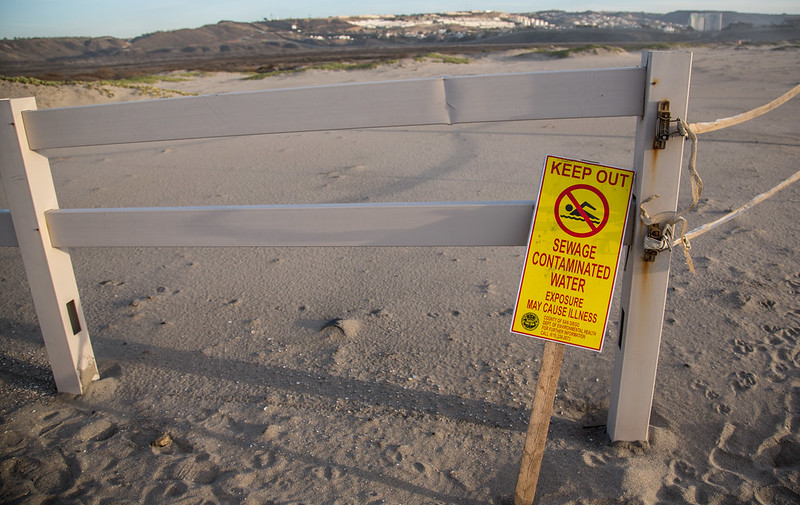Biden’s infrastructure bill takes some important steps toward greater water safety—but will he also confront our Pentagon and our water infrastructure’s reliance on unsafe or untested chemicals?

It’s time to talk about women’s economics with attitude. It’s time to laugh at what is often absurd and call out what is dangerous. By focusing on voices not typically part of mainstream man-to-man economic discourse, Women Unscrewing Screwnomics will bring you news of hopeful and practical changes and celebrate an economy waged as life—not as war.

That familiar “rime” of the ancient mariner, written by Samual Coleridge in 1797, referred to our planet’s massive bodies of salt water, covering about 70 percent of the earth. Dangerous for any but fishes to drink, we’ve seen this saltwater trope repeated in seafaring lifeboat movies—a stout punch to the jaw from the captain saves thirsty survivors from madness. Wait to be rescued.
But Erin Brockovich delivers her own punch in the jaw with another familiar movie trope in her recent book’s title on our water crisis, Superman’s Not Coming. Even when, like Brockovich, you become a movie star and win millions of dollars in court settlements, you learn some of the damage isn’t fixable in court. Her honest appraisal of the continued devastation to Hinkley, California, and its people at the center of the movie by her name, could discourage you—if it weren’t for other stories she includes.

She writes of women who studied up on their water, who ran for office, who organized and won legal cases—but never without being blocked and often losing. They all learn that ginormous corporations have lots of ways to keep on cutting corners on safety and cleanup for the sake of profit. But to play off another famous trope: What does it profit a man if his penis only shrinks, and his semen can’t swim?
That’s from a story Brockovich recently published in The Guardian that tells us the chemicals currently swimming in our water endanger sexuality, combining in ways hard to track, except by the results: disrupted hormones. Her source, this time, is the research of environmental epidemiologist Shanna Swan, whose studies at the school of medicine at Mount Sinai in New York, show a drop of 60 percent in sperm counts since 1973.
Swan and Brockovich are hardly alone in this claim. Dr. Theodora Colburn began to convene scientific conferences on hormone disruptor chemicals in 1991, sounding an alarm about BPAs and PCBs and the need for interdisciplinary research—conferences that came to be called “Wingspan.” Her 1997 book, Our Stolen Future, despite two co-authors, a foreward by Al Gore and a blurb by Robert Redford, was vilified by industry, much as Rachel Carson’s earlier Silent Spring was.
In a Frontline interview after its publication, Colburn called for a Manhattan Project-sized effort to bring scientists together and address the problem with the captains of industry. She died in 2014, and research and regulations on toxins remain puny—a match for men’s shrinking penis length and testes volume ever since.
Then, of course, there is lead; we’re more familiar with that poison. Biden’s proposed infrastructure bill includes money to replace a great many cities’ lead pipes that are now leaching. Lead is a chemical unsafe in any amount, and unfixable by any amount of dollars in settlement, since children who ingest it in their drinking water, as happened in Flint, will pay the price in their brain and body’s development for the rest of their lives.

A new film directed by another daring young woman, Sara Ganim, shows a story similar to the city of Flint, and of Hinkley, and of Robert Bilott’s Dark Waters in Parkersburg, West Virginia. Only this time it isn’t only our corporations and government technocrats at fault—it’s our supposed “security forces.”
Sara Ganim calls her movie: No Defense. Focused on Oscoda, Michigan, a small town near a now-closed Air Force base, the poisoning isn’t from lead or the chromium-6 of Hinkley. It’s more PFAS (per- and poly-fluoro-alkyl substances)—the same stuff that sickened and dirtied Dark Water. The U.S. Dept. of Defense (DoD) is the biggest, most dangerous culprit. You will love the people you meet in Ganim’s remarkable documentary, who stand up to power.
You’ll also learn there is much more to do, and friends to do it with, same as Brockovich shows us in her book sans Superman. What No Defense makes clear is that PFAS aren’t restricted to just one area. The DoD is in the process of poisoning groundwater near you because—with 700 locations of old and active military bases in the U.S., and 800 more overseas—like a virus, its water is spreading a toxic pandemic. As Toni Morrison once said so beautifully, “All water has a perfect memory and is forever trying to get back to where it was.”
Sixty thousand chemicals have been let loose without having to prove they are safe, forming plumes of poison in our water. A big Manhattan Project for our water begins to make sense. Some plume chemicals are described as hydrocarbons and called “organic” to compound confusion. The toxin revealed in Dark Waters and No Defense, the PFAS, are known as “forever chemicals.” Like now-banned DDT, PFAS “bioaccumulate,” growing more dangerous as they intensify, going up the food chain. You have PFAS in your bloodstream; 99 percent of Americans do.
Found in firefighting foam that the military is still widely using, PFAS are only the latest of their arsenal of killers. The same Pentagon DoD that tried to hide Michigan’s water problem had earlier poisoned North Carolina waters at the Marine’s Camp Lejeune, documented in a 2014 book, A Trust Betrayed. U.S. soldiers and their families got sick; their babies died. Like Michigan veterans, they were blocked from discovering their drinking water was laced with dangerous solvents like TCE (trichloroethylene) and PCE (tetrachloroethylene). A day care center was housed in the same building that had once stored DDT. Drums of old mustard gas or nerve gas were reportedly buried nearby.
You can find this book and links to other news about problems, but also about legislation and organizers at a website called Military Poisons. Investigative reporter Pat Elder has joined forces with the Earth Democracy committee of the Women’s International League for Peace & Freedom-U.S. branch (WILPF-US) to enable more of us to confront this problem. Erin Brockovich is developing a similar website still under construction with a map she calls The Community Healthbook.
If you have a municipal water system, Brockovich explains, you should get an annual report along with your water bill in July. Vaguely named a Consumer Confidence Report, I’d never noticed it before; it could more directly be called a Water Quality Report. Supposed to give details about contaminants detected, my own city water report says we’re safe. But according to WILPF’s page, my state has trouble, and there’s this slimy black ring that forms in my toilet, a new phenomenon. I’d better keep on learning—like the women who aren’t waiting for Superman or another lifeboat slug in the jaw from the captain.
Biden’s proposed infrastructure bill takes some important steps toward greater water safety, replacing lead pipes. He’ll have to overcome calls for budget cuts, but will he also confront our Pentagon and our water infrastructure’s reliance on unsafe or untested chemicals? Our children’s safety and our future—not corporate profit or government cost—must come first.
Your body is 60 percent water, each of us a small planet affected and interconnected by our fluids and their movement and memory. How do we define security? Take a look at our planet Gaia’s portrait from space, her solitary and rare H20 the only beautiful blue in sight.
Hear more about the continued struggle for clean water amidst the larger fight for environmental justice on the recent episode of “On the Issues With Michele Goodwin”: Climate Change Is Real. Now What? (with Osprey Orielle Lake and Nourbese Flint).
You may also like:





